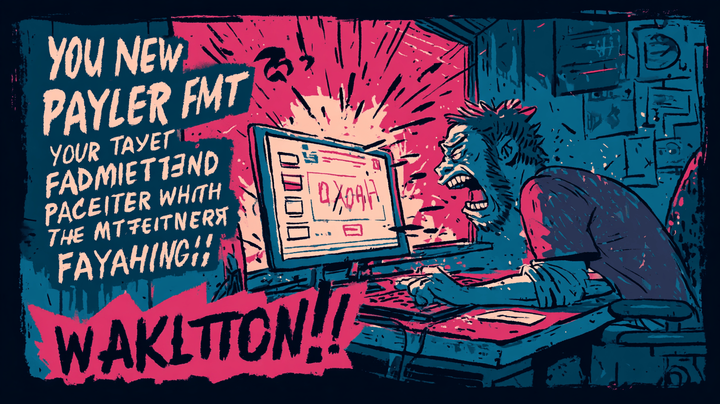VAT And Taxes for e-Residents Owning A Company in Estonia [Updated 2022]
![VAT And Taxes for e-Residents Owning A Company in Estonia [Updated 2022]](/content/images/size/w1200/wordpress/2017/11/1659905338377.jpg)
Before becoming an e-Resident and starting a company in Estonia, one of my main concerns was understanding VAT and Taxes. To my relief, I found out that it was super simple. In this article, I explain VAT and Taxes for e-Residents owning a company in Estonia.
One of the main reasons that encouraged me to start my business in Estonia was how easy it is to understand their tax system, as opposed to Spain. Even though the tax system is quite beneficial too, Estonia is not a tax haven. It is, however, a remote management haven for entrepreneurs and freelancers like me.
This means your company will pay taxes. Only, it will pay a fair amount of taxes. As we will see, delaying the taxation to the moment of profit distribution is a smart way to help new businesses. Furthermore, the clear taxation rules and transparent administration are designed to allow you to focus on your business.
VAT For e-Residents Owning A Estonian Company
Once you have opened your company (generally using a Business Service Provider), your company can apply to become VAT liable and get a VAT number.
Do I need A VAT Number?
Your business will need a VAT number if some of these conditions apply:
- First, if some of your customers require it for their sales invoices. This is usually the case with European companies.
- Next, if you sell services like software development or design to European customers, and you make more than 40k€ per year.
- Also, if you sell digital services or products (software or digital content) to B2C customers in the European Union.
- Finally, if you sell digital services or products (software or digital content) to B2B customers only if your sales exceed 40k€ per year.
What’s a digital service? Any good or added value that’s not physical. This includes software development, web design, marketing and SEO services, etc.
Should I Bother?
Even if your sales won’t exceed 40k, it’s always interesting to apply for a VAT number early on. Why?
A VAT number will make your life easier when making business with other companies from the EU.
For starters, A VAT-liable EU company invoicing another VAT-liable EU company will add VAT 0% to the invoice. That means VAT does not get added to the invoice, which is quite beneficial.
On the contrary, if an EU company that’s VAT liable invoices your company, and you are not VAT-liable, they will add VAT to the invoice, and you won’t be able to deduct it. As a result, as soon as you do business with other EU companies, it is advisable to apply for a VAT number.
When To Add VAT To Your Invoices
Ok, so you have registered your company in Estonia, and have a VAT number. When should you add VAT in your invoices, and when not?
Overall, it depends on the type of services you offer:
Interactive services
If your services need your direct intervention (i.e: consultancy, software development), then:
- If your customer is a B2B business from the European Union, with a valid VAT number, you don’t add VAT (0%). Instead, you add a clause to your invoice: “The purchase is liable to Intra-Community supply 0%, Reverse charge”. On the official EU VAT-VIES website, you can check if a customer’s VAT number a is valid.
- On the contrary, if your customer doesn’t have a valid VAT number, you need to add the Estonian VAT (20%). This applies to B2C and B2B customers.
- Finally, if the customer is outside of Europe (i.e: an American customer), you don’t add any VAT (0%).
Most freelancing activities fall into this category.
Automated services
Conversely, if your services are automated (i.e: cloud hosting, SaaS), then:
- If your customer is a B2B from Europe with a valid VAT number, similar to the previous situation, you add the same clause and add no VAT (0%).
- Conversely, if your customer does not have a valid VAT number, you apply the VAT from their home country. This applies to B2B and B2C customers. Thus, if your customer is from Spain, you will add the Spanish VAT (21%).
- Finally, if your customer is outside of Europe, you don’t apply VAT (0%).
Most SaaS will fall into this category. As you can see, Europe is still a mess when it comes to businesses with subscription models.
As an exception to the previous rules, if you are selling your services to an Estonian company, you need to add Estonian VAT to your invoice.
Taxes For e-Residents Owning A Estonian Company
Ok, now that you know how to build your invoices and what VAT to apply, let’s talk about taxes.
The revenue of your company is not taxed as long as it is re-invested or kept in the company. That means that if you are charging your customers for your services, paying for business expenses, and not distributing profit, you don’t pay a cent in taxes.
Then, when does your company pay taxes? When you get the money out to your personal account (i.e: when you distribute profit). This profit usually takes the form of dividends, but salaries for board members (even those living outside of Estonia) are considered profit distribution and subject to taxation. If you are unclear about the distinction between you and your business, have a look at the posts “You are not your company” and “Demystifying Digital Nomad Taxes“.
This delayed taxation makes a big difference, especially when your business is starting. In my view, the Estonian business system is designed to support new businesses. It is a smart way to encourage you to reinvest in your company and help you grow.
There are two ways of earning money from your Estonian company: salaries, and dividends.
Dividends
After submitting the annual report of the company (which happens up to Jun 30 of the following financial year), your company can distribute dividends to its shareholders. Distributed profits are subject to a flat income tax of 20% of gross. That is 25%, or 20/80 of the net amount distributed.
Let’s see an example. Imagine you had €1M in revenue during the previous fiscal year. You are the only shareholder and board member of your company. You decide to pay yourself €100,000 in dividends at the beginning of the following year. For that amount, your company will pay €25,000 in taxes (100,000 x 20/80). In other words, of a gross of €125,000, you pay 20% (25k) in taxes. Please note that your company had 1 million euros in revenue, but that is irrelevant. So for that million, you are paying just 25k in taxes.
The tax subject -the person to be taxed for those dividends- is the company, not you (as an individual). This distinction is important. You don’t have to pay additional personal income taxes in Estonia for just being a shareholder of your Estonian company. However, if you are a tax resident in a different country, you may need to pay personal taxes for the dividends received.
Assigning Yourself A Salary
Paying yourself a salary is much more complex, and the taxes applied will vary depending on your tax residence.
If you are a tax resident in Estonia, you will pay taxes for your salary, including income tax, social tax, and unemployment and pension insurance.
However, if you are reading this, most probably you live outside of Estonia.
If you are a digital nomad and don’t have a tax residence, it is easy. You can pay yourself an employee salary. As you don’t live in Estonia, that salary is not taxed in Estonia. As you are not a tax resident in any other country, your salary is not taxed anywhere else either.
Some time ago, there was a distinction between employee salary (which was not taxed in Estonia) and board member salary (which was taxed in Estonia, regardless of your tax residence). However, now it’s accepted that, if you are not an Estonian resident, you don’t need to have a board member salary or pay taxes in Estonia for your salaries.
If you are living (meaning, you are a tax resident in) another country, you may have to pay taxes for your salary in that country. Depending on where you live, your Estonian company will need to become a social taxpayer in that country to pay proper taxes (including social taxes) for you. My advice, in that case, is to contact a local tax advisor that helps you understand your obligations to the local tax authorities,
Smart Expenses And Benefits for e-Residents
The concept of tax-free reinvestment in your company is certainly one of the main appeals of the Estonian business system. Let’s dig a little deeper into expenses and how your company can grow by making use of this smart system.
What’s a valid company expense?
Basically, every expense that is related to the business activity. The e-Residency Program of Estonia was designed with digital nomads and location-independent entrepreneurs in mind. As a result, typical deductible expenses include:
- Hosting, domains, cloud services, and other software services with a recurrent subscription. From the fee of your business service provider to legal advice from a lawyer or hosting costs.
- Consumables or expendable equipment for your professional activity.
- Software and tools you buy for work.
- Travel expenses, including flights, car rental, services like Uber or Bolt, accommodation and apartments. This includes trips to Estonia (i.e: to open your bank account).
- Payment fees (i.e: gateways for your e-commerce site) and bank fees.
- Lunch meals, but only the part of your customer. You cannot declare your own lunch as business expenditure.
Non-deductible and personal expenses
Apart from any personal expense, there are some expenses that are not deductible. Some of them include:
- Fuel/gas for domestic trips within a country is generally not included. I.E: if you travel from Madrid to Barcelona (both in Spain) by car, that’s not included. Curiously enough, public transport trips are allowed as long as you are visiting a customer or going to a work meeting. I.E: if you take the underground in Paris to visit one of your customers at their offices in the city center.
- Vacation and holiday trips. They are especially wary about trips to your home country, especially during the holiday seasons. You will need to justify that this was, in fact, a business trip.
- Permanent offices. To avoid having a permanent establishment in any other country, the maximum time that you can declare a concrete office or rental as a business expense is 6 months.
The Daily Allowance
Additionally, if you travel for business-related activities, you can benefit from the Daily Allowance. When we travel, there are many extra expenses, like lunches, coffee, taxies and public transport to name a few. The daily allowance allows you to get back some of this money, tax-free.
In order to benefit from the Daily Allowance, you need to collect all the documents related to the trip, from flight tickets to AirBnB invoices. Daily Allowance is only available for trips between two countries with a clear, predefined duration.
Traveling from Italy to Germany for a week to attend a marketing conference is a perfect example. If you want to move to your next digital nomad spot and live there for three months, that’s not covered by Daily Allowance.
The allowance gets you 50 EUR per day for the first 15 days (max) in a calendar month, and 32 EUR per day for the rest of the month if the trip (or a combination of multiple trips) is longer than 15 days. Remember, this amount is not taxed.
It is important to remember that the Daily Allowance can only be claimed for a business trip with a very specific purpose! Some blogs depict this basically as if it was a tax-free 1230€ salary. It is not. You cannot travel to Thailand to stay there for one year and claim the Daily Allowance every month.
Out Of Pocket Expenses
The Estonian business system is very flexible when it comes to business expenses. One perfect example is “Out of pocket expenses“. Say you find yourself without your business card or a way of paying a business expense with your business account. In that case, you can just pay this expense with your own personal money (either with cash, bank transfer from your personal account, or your personal card).
Then, by uploading the invoice, it will be marked as an “Out of pocket expense”, so you can reimburse your money back to your personal account later.
Thinking About Opening Your Company In Estonia?
If you have decided to open your company in Estonia, I encourage you to start your business through Companio. Companio takes care of everything, from registering your company to doing your accountancy and taxes, so you can focus on growing your business.
If you register your company with the link above, you will get a 100€ discount!
Conclusion
In this article, I described how VAT and taxes for e-Residents work when you own a company in Estonia. The Estonian system is pretty straightforward and easy to understand.
Still, freelancers and entrepreneurs don’t want to care about accounting or any of that boring stuff. We just want to be able to work on the stuff we love and focus on growing our businesses. If that sounds like you, I encourage you to let Companio take care of everything, so you only need to connect your bank account and upload your invoices. That’s all.
Isn’t it beautiful when you can just work on the stuff you love and focus on growing your business?
I hope this post was helpful. Any doubts? Let me know in the comments below.




Comments ()